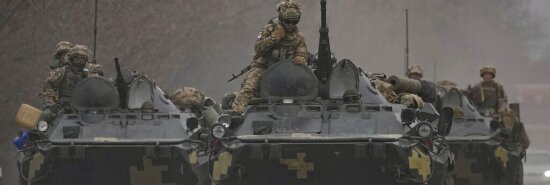
Ending half-measures is the key to Ukraine’s victory — and NATO’s security
Sen. Lindsey Graham Adam Boehler
Video Embed
The long-awaited Ukrainian counteroffensive has begun and despite incredibly hard fighting, the Ukrainians have achieved gains in the Donetsk and Zaporizhzhia regions. This progress has happened in part because of American and Western military assistance.
The Wagner Group’s recent challenge to the Putin regime should also boost Ukraine’s will to fight. But the United States and its allies will need to continue supplying Ukraine beyond half-measures if we want to transform the current slow grind into a decisive Ukrainian victory. The United States will also need to help mobilize the private sector to rebuild the country and deter future Russian invasions.
BIDEN MAY BUCK BIPARTISAN VOTE TO KEEP MORTGAGE OVERHAUL IN PLACE
After 16 months of war, America’s decision to supply arms and training to Ukraine has translated into the survival of the Ukrainian state and catastrophic Russian losses on the battlefield, reducing Russia’s threat to NATO. Seldom have U.S. defense dollars been better spent, though we must continue to hold our allies accountable to their own financial pledges. Arming Ukraine is not a partisan course of action. It’s an American one. This work actually began under the former Trump administration, which authorized $47 million in Javelin missiles and launchers in 2018, $39 million for more weapons in 2019, and nearly $400 million in other military assistance that same year. Since January 2022, the current Biden administration has devoted billions more in arms, including the High Mobility Artillery Rocket System (HIMARS) artillery system, aerial drones, and many other forms of weaponry and ammunition.
The Ukrainians are grateful for these contributions, but the Ukrainian counteroffensive would be more potent if the U.S. government had not adopted so many half-measures out of ill-founded fears of provoking Russia. The Ukrainians are currently fighting without the benefit of air superiority, a disadvantage that could have been reduced had the United States decided to provide F-16 training earlier than May of this year.
Similarly, American M1A1 Abrams tanks have been absent from the battlefield for too long, and deliveries are still slow. Cluster munitions and long-range Army Tactical Missile System (ATACMS) missiles are still missing from Ukraine’s arsenal. Kyiv’s pleas for such items have often fallen on deaf Western ears. According to the Wall Street Journal, President Volodymyr Zelensky “couldn’t understand why, in his view, they were drip-feeding more-advanced arms that they know would protect lives and help Ukraine win.”
Ending military half-measures is not just the means to the end of the war. It is the foundation for Ukraine’s economic revival. Public funds alone will never be enough to meet Ukraine’s needs given the scale of destruction. Private sector businesses and investors will be crucial to building a robust, growing, and self-sustaining economy that produces jobs, tax revenue, and long-term prosperity. Government aid can enable investments, but not replace them.
Accelerating Ukraine’s economic recovery will also hasten Ukraine’s integration into the Euro-Atlantic community. The Development Finance Corporation has already done well to provide war-time political risk insurance for firms interested in helping Ukraine now. This program should be expanded to advantage American businesses willing to invest in Ukraine.
The American University of Kyiv, launched during Russia’s year of invasion, will build an American-trained workforce for the future and is a prime example of a project worthy of U.S. support.
DFC should also work to make Ukraine a net energy exporter. Ukraine has substantial reserves of natural gas and is exceptionally well-placed to produce wind, solar, and hydrogen energy for itself and the European Union. Europe should see Ukraine as a solution to its structural energy problems, and DFC can support American investors in helping Ukraine achieve this position. It’s a classic win-win.
Of course, Ukraine and its European partners have their own recovery work cut out for them, too. The Ukrainian government must continue to purge corruption from its institutions and uphold the rule of law. European governments must also pay their fair share for reconstruction, especially since it is in their interest to do so. The faster Ukraine rebuilds, the better it will be able to accept refugees returning from European countries.
CLICK HERE TO READ MORE FROM THE WASHINGTON EXAMINER
Western governments setting up funding mechanisms for Ukrainian reconstruction should also exclude Chinese companies from bidding on contracts. China was Ukraine’s top trading partner before the war. But as the senior partner in the Russo-Chinese “no limits” relationship, the Chinese Communist Party has refused to condemn the Russian invasion. No Chinese firm should be allowed to reap the benefits of a war the CCP could be doing more to stop.
Giving Ukrainians all that they need to win is not just morally correct. It is the best way to hasten the end of the war and begin the private sector-led stabilization of the country. Many factors will shape whether the Ukrainian counteroffensive is successful. America should resolve to make it so.
Lindsey Graham is a U.S. senator for South Carolina. Adam Boehler is a former CEO of the U.S. Development Finance Corporation.
